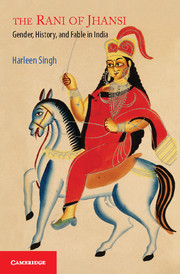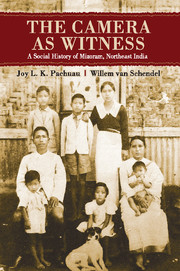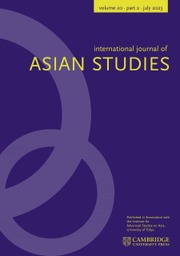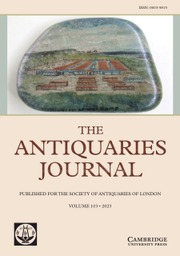The Rani of Jhansi
Colonial texts often read the Indian woman warrior as a cultural anomaly, but Indian texts find recourse in the mythological examples of the female warrior. Rani Lakshmi Bai's remaking transforms the mythologically viable, yet socially marginal, figure of a woman in battle into bounded and meaningful feminine roles such as daughter, wife, mother, and queen. Women and the home were integral to how nationalist discourse envisioned the modern, yet traditional, Indian nation. The Rani remains a metaphoric referent of the home, and is an abiding symbol of the nation, reinvented as authority, power, and tradition. The depictions of the Rani signals what is at stake in representing the unrestricted woman in the public sphere. The book extends the discussion on what constitutes the historical archive of the gendered colonial subject and the postcolonial rebel by being attentive to the vexed figures produced within the competing ideologies of colonialism and nationalism.
- Allows readers to get a comprehensive view of colonial and postcolonial representation
- Gives an overview of the historical antecedents of the Rani of Jhansi
- Offers a comparative view of British and Indian literary and historical representation
Reviews & endorsements
'It is one of the first works in the arena of South Asian studies to provide a feminist account of a rebellion against empire; a theme totally unique and much needed in explicating India's complex relationship to Britain. Moreover, the author's intellectual gambit of bypassing numerous routine, historico-political accounts that are regurgitated to bolster colonial and/or postcolonial theses is noteworthy.' Gita Rajan, Fairfield University, Connecticut
'It is a rebellious book, in its own way. Eschewing the 'historical' Rani of Jhansi, in favor of the Rani of literature, fable, folk history, film, and rumor, Singh undertakes an extraordinary engagement with this pivotal figure of the political and aesthetics of the 'colonial encounter'. The book takes as central motifs the sexual configurations of 'India' through the metaphor of the Rani. It therefore operates primarily through a gender and power analysis, though Singh admirably brings this register to bear on issues of class, caste, religion, and modernity itself.' Christian Lee Novetzke, University of Washington
Product details
June 2014Hardback
9781107042803
199 pages
237 × 157 × 19 mm
0.47kg
Available
Table of Contents
- List of figures
- Acknowledgements
- 1. Introduction
- 2. Enslaving masculinity: rape scripts and the erotics of power
- 3. India's Aryan queen: colonial ambivalence and race in the mutiny
- 4. Coherent pasts in Hindi literature and film
- 5. Unmaking the nationalist archive: gender and dalit historiography
- Afterword
- Bibliography
- Index.







